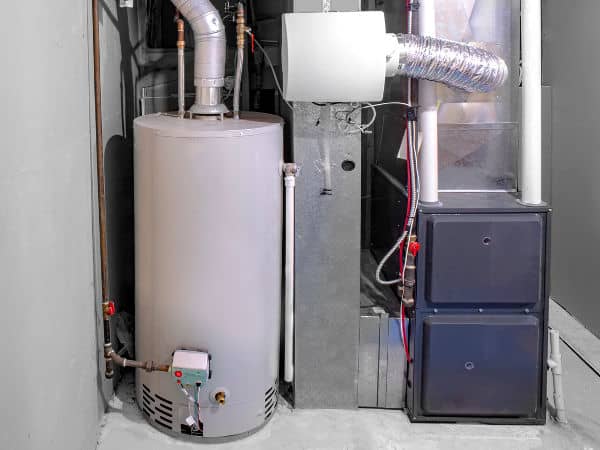Are you in search of know-how on Water Heater Maintenance Tips You Can't Afford to Forget?

Hot water is necessary for daily convenience, whether it's for a rejuvenating shower or washing recipes. To ensure your warm water system runs effectively and lasts longer, routine upkeep is key. This post offers useful ideas and understandings on how to preserve your home's hot water system to avoid interruptions and costly repairs.
Intro
Maintaining your home's warm water system might seem daunting, however with a couple of simple actions, you can ensure it runs smoothly for several years ahead. This guide covers whatever from understanding your hot water system to DIY upkeep tips and understanding when to call expert aid.
Importance of Preserving Your Warm Water System
Regular maintenance not just extends the life expectancy of your warm water system but also ensures it runs successfully. Disregarding maintenance can result in lowered efficiency, higher power costs, and even premature failure of the system.
Indicators Your Warm Water System Needs Maintenance
Understanding when your hot water system needs focus can protect against significant concerns. Keep an eye out for indicators such as irregular water temperature level, weird sounds from the heating system, or corroded water.
Recognizing Your Warm Water System
Prior to diving right into upkeep jobs, it's valuable to understand the basic components of your warm water system. Commonly, this consists of the hot water heater itself, pipelines, anode rods, and temperature controls.
Regular Monthly Maintenance Tasks
Routine month-to-month checks can aid catch small issues before they rise.
Purging the Water Heater
Purging your hot water heater gets rid of debris buildup, improving effectiveness and extending its life.
Monitoring and Changing Anode Rods
Anode poles stop rust inside the storage tank. Checking and replacing them when worn out is essential.
Inspecting and Adjusting Temperature Level Setups
Readjusting the temperature level setups guarantees optimal performance and safety.
DIY Tips for Maintenance
You can perform numerous upkeep jobs yourself to maintain your hot water system in top condition.
Checking for Leakages
Regularly evaluate pipelines and links for leaks, as these can result in water damage and greater costs.
Checking Pressure Relief Valves
Evaluating the pressure relief valve guarantees it operates appropriately and protects against too much stress build-up.
Shielding Pipelines
Insulating hot water pipes reduces warmth loss and can conserve power.
When to Call an Expert
While do it yourself maintenance is useful, some issues need expert know-how.
Facility Problems Calling For Expert Assistance
Examples consist of significant leaks, electrical problems, or if your water heater is continually underperforming.
Regular Expert Maintenance Advantages
Specialist upkeep can include extensive assessments, tune-ups, and ensuring compliance with safety and security criteria.
Final thought
Regular upkeep of your home's hot water system is essential for effectiveness, longevity, and cost financial savings. By following these tips and recognizing when to seek expert help, you can make certain a trusted supply of hot water without unanticipated disturbances.
Water Heater Maintenance Tips
Test the TPR Valve
Shut off the power and the cold-water supply valve. Place a bucket under the pipe connected to the temperature-pressure-release (TPR) valve on the top or side of the tank. (This valve opens if the tank pressure gets too high.) Lift the valve’s tab to let some water out, then let go. If water keeps flowing, drain the tank partway, unscrew the old valve with a pipe wrench, and install a new one. Check the Anode Rod
Put a hose to the tank’s drain cock and let out a few gallons of water. Now fit a 1 1/16-inch socket onto the rod’s hex head on top of the heater (or under its top plate) and unscrew the rod. If it’s less than ½ inch thick or coated with calcium, buy a new one, wrap its threads with Teflon tape, put it back in the tank, and tighten securely. Use this segmented rod if headroom above the tank is limited. Drain the Tank and Wash Out Sediment
Drain the remaining water in the tank into the bucket, then stir up the sediment on the tank’s bottom by briefly opening the cold-water supply valve. Drain and repeat until clean water comes out of the hose. Close the drain cock, refill the tank, and turn its power back on. Adjust the Temperature
Find the temperature dial on the side of the tank and unscrew its cover. Adjust the dial to 120 degrees using a flathead screwdriver. For every 10 degrees the temperature is lowered, you can expect to save up to 5 percent in energy costs. Turn the water heater off or the thermostat down to its lowest setting if you plan to be away from home for more than three days. Insulate the Pipes
Buy some self-sticking 3/8-inch-thick foam pipe insulation that matches the pipes’ diameter. Slide the foam over the hot-and cold-water pipes as far as you can reach. Insulating the cold-water pipe prevents condensation in summer. Peel the tape and squeeze the insulation closed. If the pipe is 6 inches or less from the flue, cover it with 1-inch-thick unfaced fiberglass pipe wrap. https://www.thisoldhouse.com/plumbing/21016402/how-to-maintain-a-water-heater

As a serious person who reads on What Kind of Maintenance Do Water Heaters Need?, I think sharing that excerpt was a smart idea. Sharing is good. You never know, you could be helping someone out. We recognize the value of reading our article about What Kind of Maintenance Do Water Heaters Need?.
Go Company